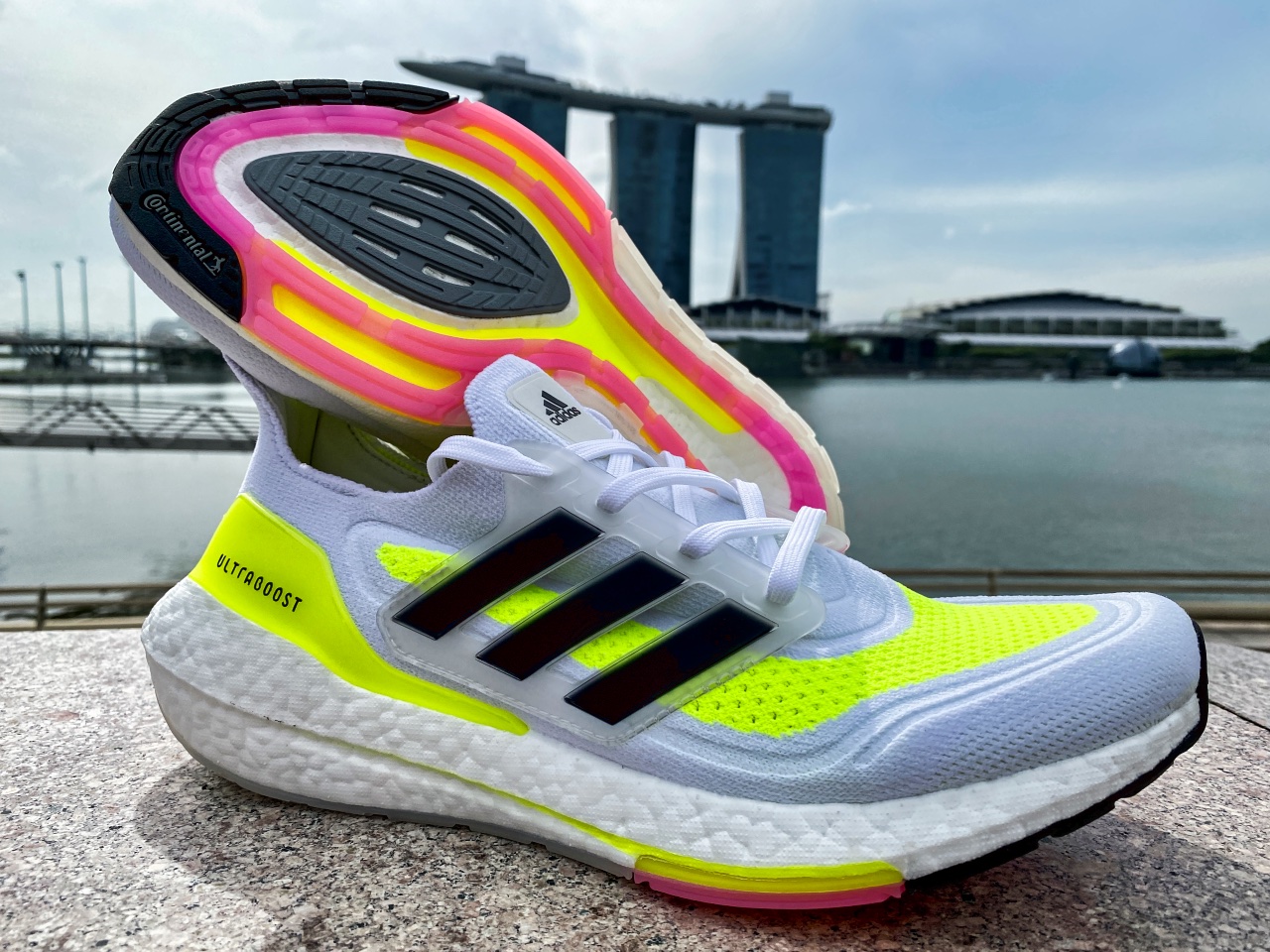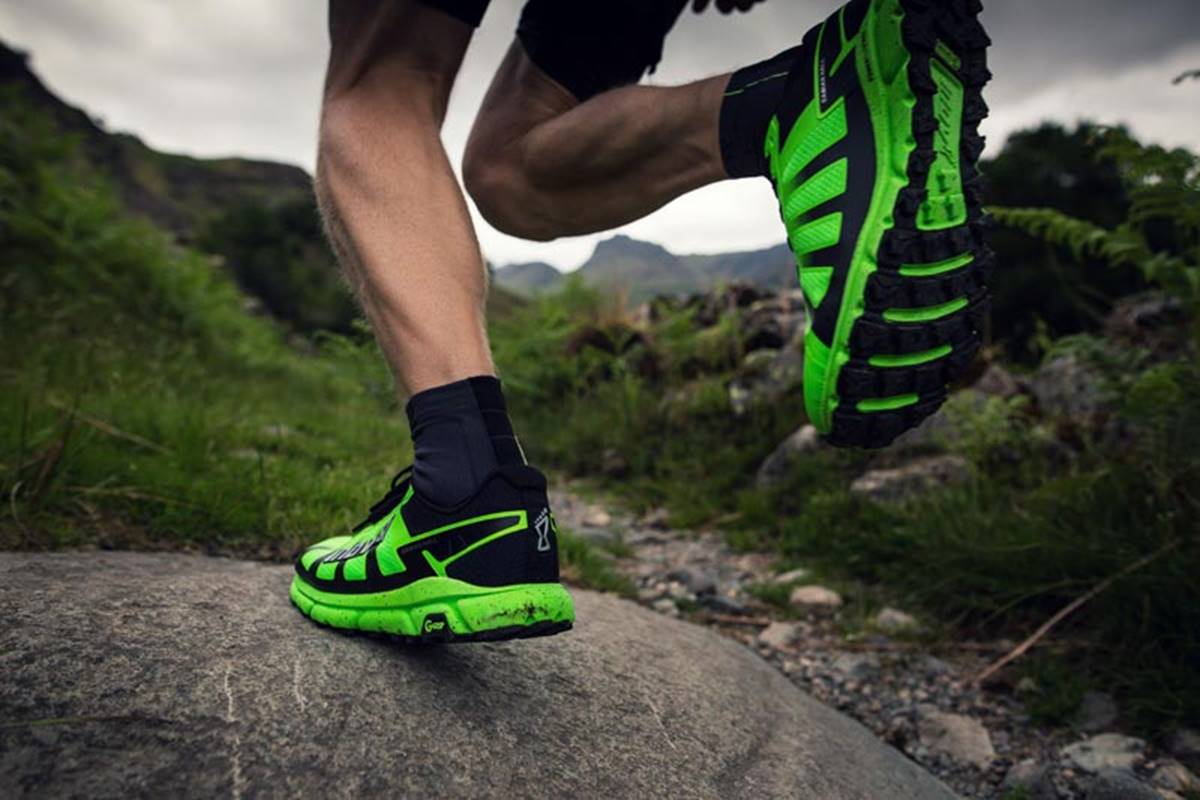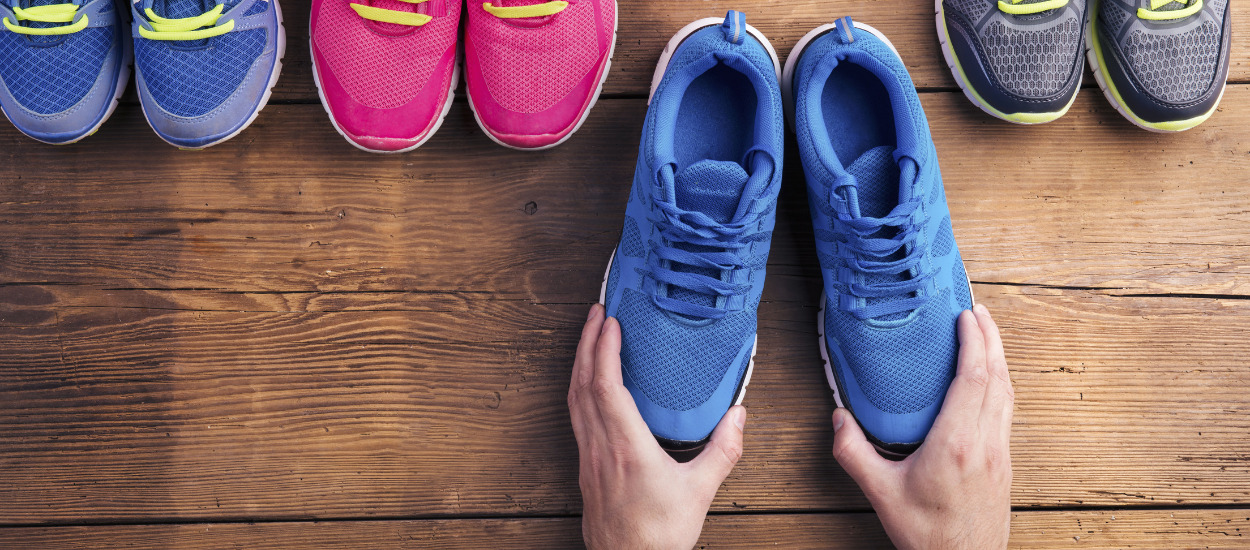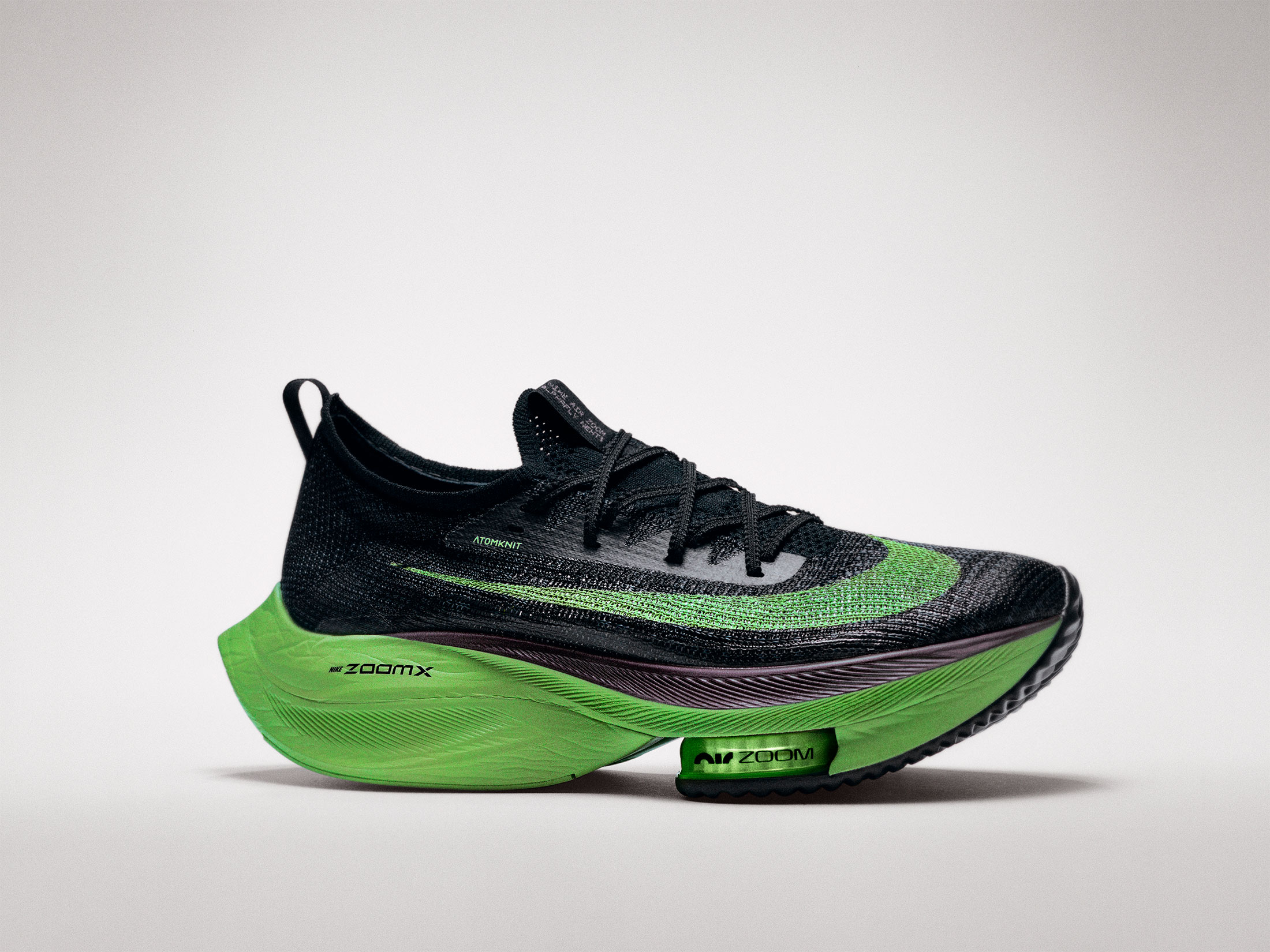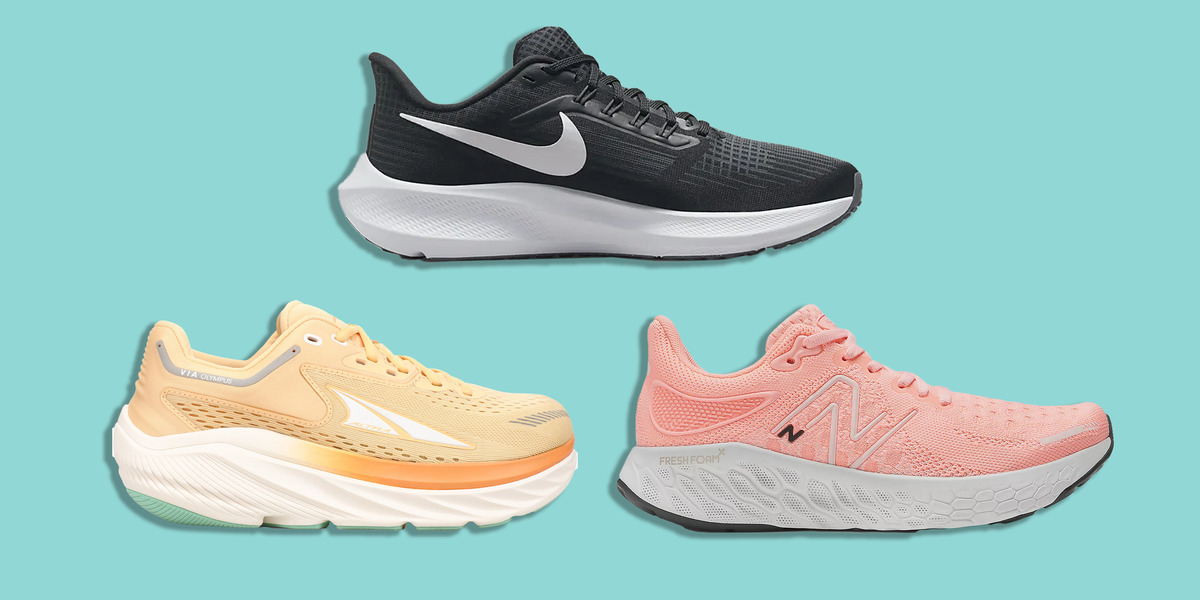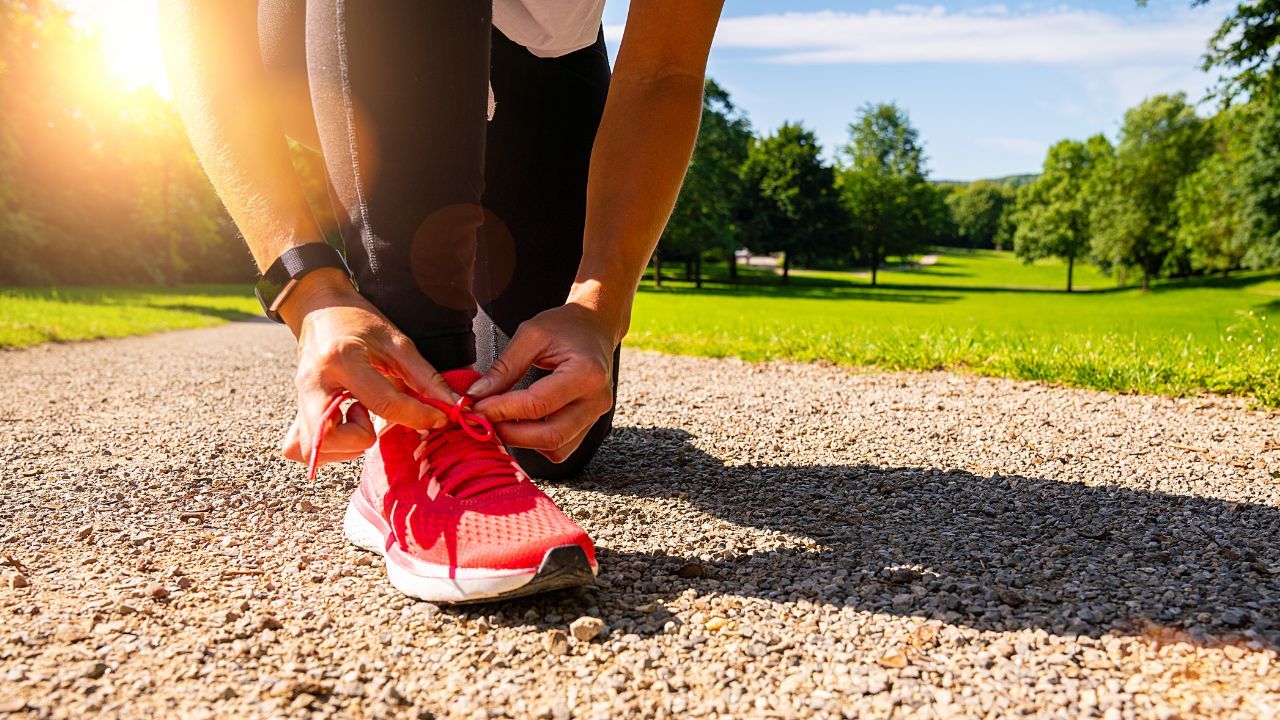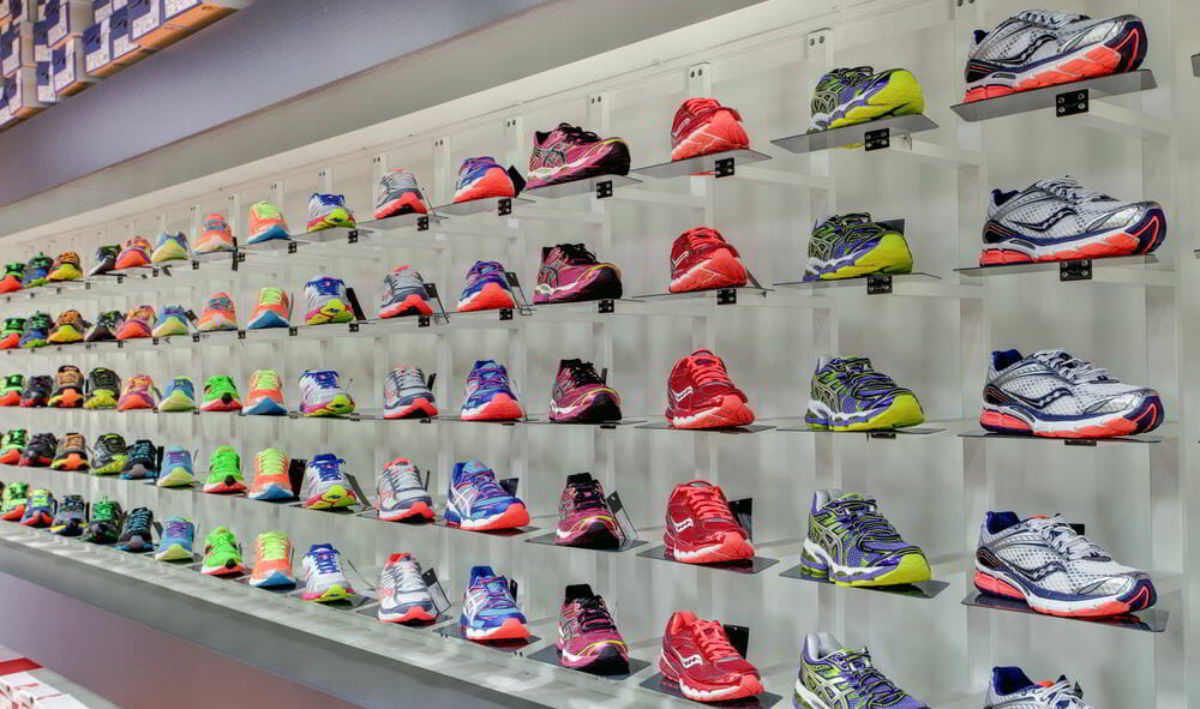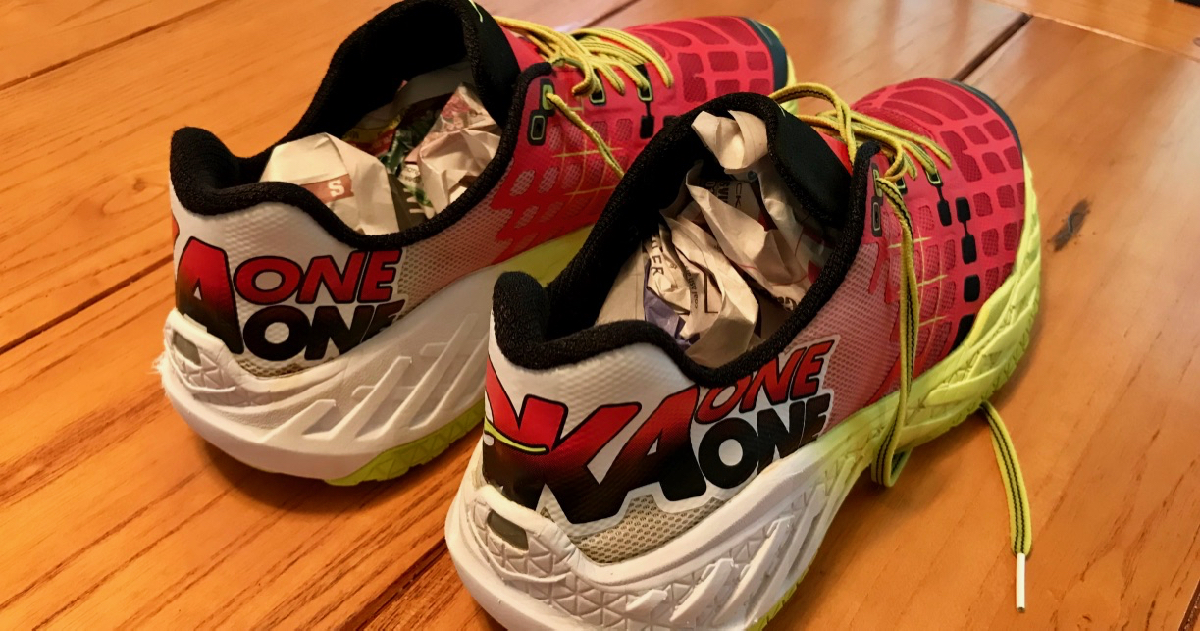Home>Misc>Featured>How Much Height Does Running Shoes Give You
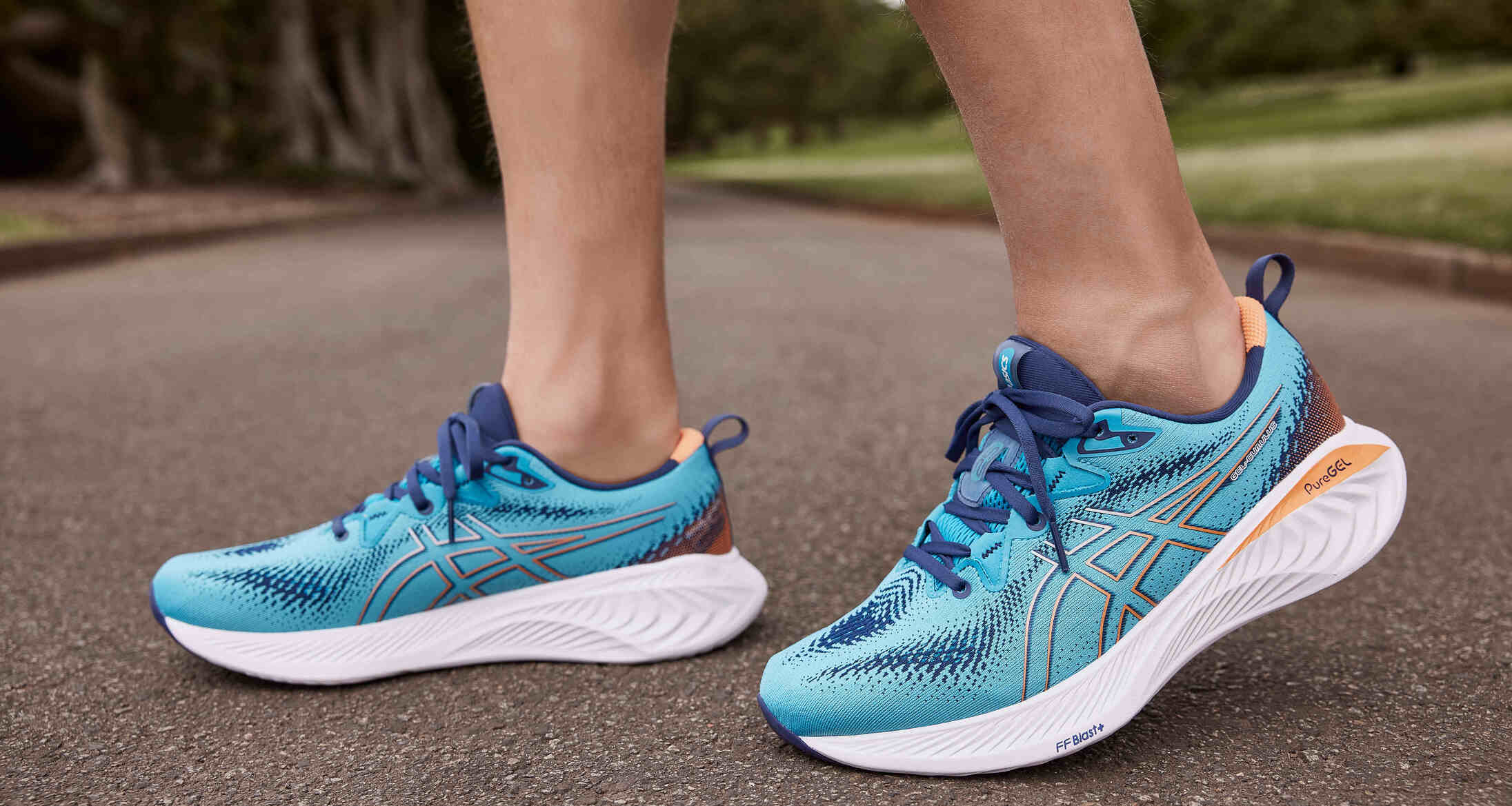

Featured
How Much Height Does Running Shoes Give You
Modified: January 2, 2024
Discover how much height running shoes can give you with our featured collection. Improve your running performance while adding a stylish lift to your look.
Introduction
Welcome to the world of running shoes and the intriguing factor of height. When it comes to running, the right pair of shoes can make all the difference in your performance and comfort. But have you ever wondered if running shoes give you an extra boost in height?
Height has always been a significant aspect of human appearance and confidence. Many individuals desire a taller stature, whether it’s to enhance their physical appearance or to improve their presence in certain social or professional settings. This desire for height has led to the development of various products and techniques aimed at increasing one’s vertical dimension.
In recent years, running shoes have become increasingly popular as a means of achieving a subtle height increase. These specially designed shoes are not only functional for running and athletic activities but also offer a hidden benefit for those desiring a little extra lift. However, it’s essential to understand the science and mechanics behind this phenomenon to make an informed decision regarding the use of running shoes for height enhancement.
In this comprehensive guide, we will explore the concept of shoe height in the context of running shoes. We will delve into the factors that influence shoe height, the features commonly found in running shoes that can contribute to an increased vertical dimension, and methods to measure the additional height provided by these shoes. Additionally, we will compare various running shoe brands to determine which ones offer the most significant height increase. We will also discuss the pros and cons of using shoes for height enhancement and provide you with valuable tips for maintaining the durability of elevated running shoes.
So, if you’re curious about whether running shoes have the potential to give you a little extra height, read on! By the end of this guide, you will have a thorough understanding of running shoe height, enabling you to make an informed decision about the right shoe for your needs and goals.
Importance of Shoe Height in Running
When it comes to running, shoe height plays a crucial role in providing support, stability, and overall performance. A well-designed running shoe with the right amount of height can significantly impact your running experience. Let’s explore the importance of shoe height in running and why it matters.
1. Cushioning and Shock Absorption: Running involves repetitive impact with the ground, which can put stress on your joints. Shoes with adequate height and cushioning help absorb and distribute this impact, reducing the risk of injuries such as stress fractures and joint pain. The additional height in the midsole and heel provides a buffer against these impact forces, offering a more comfortable and protective running experience.
2. Alignment and Stability: The height of a running shoe can influence your foot and ankle alignment while running. Shoes with a higher heel-to-toe drop promote a more forward-leaning posture, which can encourage efficient running mechanics for some individuals. Conversely, shoes with minimal height provide a more natural, barefoot-like experience, allowing for a more flexible and responsive stride. The choice of shoe height depends on factors such as individual biomechanics, running style, and personal preference.
3. Energy Return: Running requires energy transfer from the foot to the ground and back. Running shoes with additional height often incorporate technologies like foam midsoles or air cushioning systems that enhance energy return. These features compress upon impact and then release stored energy, propelling you forward with each stride. The added height can contribute to a more efficient and responsive running experience, enabling you to conserve energy and maintain a consistent pace.
4. Protection and Traction: The height of the outsole and the pattern of the shoe’s tread can impact your grip and traction on various surfaces. Shoes designed for trail running or adverse weather conditions often have a higher profile and more aggressive outsole patterns to provide better grip and protection. These features are crucial for maintaining stability and preventing slips and falls during your runs.
5. Psychological Confidence: While height increase may not directly affect running performance, it can have a psychological impact on some individuals. The belief that you have gained a few extra inches can boost your confidence, leading to improved focus, motivation, and a more positive mindset during your runs. This mental component can indirectly enhance your running performance and overall enjoyment of the sport.
Considering the importance of shoe height in running, it’s essential to find the right balance that caters to your specific needs and preferences. By understanding how shoe height affects cushioning, alignment, energy return, protection, and psychological confidence, you can make an informed choice when selecting your running shoes.
Factors Affecting Shoe Height
Several factors influence the overall height of a running shoe. Understanding these factors can help you choose a shoe that provides the desired level of height increase without compromising comfort or performance. Let’s explore the key factors that affect shoe height:
1. Midsole Thickness: The midsole is the layer between the outsole and the upper of the shoe, and its thickness directly contributes to the overall shoe height. Running shoes with a thicker midsole offer more cushioning and typically provide a higher profile. The thickness can vary depending on the type of running shoe – minimalist shoes have a thin midsole for a close-to-the-ground feel, while maximalist shoes feature a thicker midsole for enhanced cushioning and height.
2. Heel-to-Toe Drop: The heel-to-toe drop refers to the height difference between the heel and the toe of the shoe. A higher heel-to-toe drop translates to a more elevated heel, providing additional height. Traditional running shoes often have a heel-to-toe drop of around 10mm, promoting a more cushioned and supportive feel. However, some shoes offer a lower or even zero-drop platform, which reduces the height disparity between the heel and toe.
3. Stack Height: The stack height refers to the total thickness of the shoe’s midsole cushioning, including both the heel and forefoot areas. A larger stack height typically means a taller shoe. This feature is especially prominent in maximalist running shoes, which prioritize maximum cushioning and shock absorption. On the other hand, minimalist shoes have a lower stack height and a more minimalistic design for a closer connection to the ground.
4. Insole and Sockliner: The insole and sockliner are the inner layers of the shoe that provide additional cushioning and support. Some running shoes come with removable insoles or sockliners that allow for customization or the option to replace them with orthotic inserts. These layers can add a slight increase in height, depending on their thickness and materials used.
5. Upper Design: While the upper of a shoe primarily affects fit and comfort, certain design elements can contribute to the impression of height. For example, shoes with a padded collar or a thicker tongue may appear slightly taller. Additionally, some shoes feature overlays or patterns on the upper that visually enhance the shoe’s profile, giving the illusion of increased height.
6. Materials and Construction: The choice of materials and construction techniques employed in the manufacturing of running shoes can affect their overall height. Some materials, like foams and gels, offer greater compressibility and cushioning properties, allowing for a higher sole profile. The construction methods used, such as injection molding or stacked layers, can also impact the shoe’s height.
Keep in mind that the combination of these factors determines the overall shoe height. Manufacturers tailor these elements to create specific running shoe designs, catering to different running styles, preferences, and performance needs. As you explore different models, consider these factors to find a shoe that provides the desired height increase along with the other features that align with your running goals.
Common Features of Running Shoes that Increase Height
Running shoes are designed with various features that can contribute to an increased height, providing additional comfort and support for runners. These features are carefully engineered to enhance performance while ensuring a comfortable and cushioned running experience. Let’s explore some of the common features found in running shoes that contribute to an increased height:
1. Midsole Cushioning: One of the primary factors that contribute to increased shoe height is the additional cushioning in the midsole. Many running shoes utilize specialized foam materials, such as ethylene vinyl acetate (EVA) or proprietary foams, which provide superior shock absorption and cushioning. The thickness and density of the midsole cushioning affect the overall height of the shoe, offering a more substantial and supportive feel.
2. Heel Technology: Running shoes often incorporate specific heel technologies to enhance stability and provide extra height. Features like air cushioning, gel inserts, or responsive foams are strategically placed in the heel area to absorb impact forces and provide additional height and support. These technologies not only increase the overall shoe height but also contribute to a comfortable and responsive running experience.
3. Elevated Heel Design: Some running shoe models feature an elevated or raised heel design, known as a heel counter or heel stabilizer. This design element promotes a forward-leaning posture and encourages a smooth heel-to-toe transition. The elevated heel provides extra height and can help alleviate stress on the Achilles tendon and calf muscles, making it ideal for runners with a midfoot or heel strike gait.
4. Removable Insoles: Many running shoes come with removable insoles or sockliners that allow for customization and adjustment. These insoles can provide additional cushioning and height, allowing you to fine-tune the shoe’s fit and feel. By replacing the original insoles with thicker or more supportive options, you can increase the overall height of the shoe according to your preferences.
5. Outsole Design: The outsole of a running shoe is another factor that can contribute to increased height. Shoes with a thicker and more substantial outsole can add extra height without compromising traction and durability. It’s common to find running shoes with a thicker outsole in specific areas, such as the heel or forefoot, to provide targeted cushioning and height where it’s needed most.
6. Internal Wedges: Internal wedges are a feature found in some running shoes designed to provide additional height and stability. These wedges are typically positioned in the midsole and serve to correct pronation issues or improve alignment. By incorporating internal wedges, running shoes can offer an increased height along with enhanced support and biomechanical efficiency.
It’s important to note that not all running shoe models will have all these features. Different shoe brands and models prioritize different aspects, such as cushioning, stability, or minimalism. When selecting a running shoe for height, consider the specific features and technologies that align with your running style, biomechanics, and comfort preferences.
Measuring the Additional Height Provided by Running Shoes
When it comes to determining the additional height provided by running shoes, it’s essential to have a reliable method of measurement. While the exact measurement can vary depending on factors like shoe model, size, and individual factors, there are a few approaches you can take to get a rough estimate of the height increase. Let’s explore some methods to measure the additional height provided by running shoes:
1. Visual Comparison: One simple way to estimate the height increase is through a visual comparison. Place the running shoe on a flat surface and compare it side by side with a standard shoe or barefoot measurement. Take note of the difference in height, paying attention to the midsole and heel area. While this method may not provide precise measurements, it can give you a general idea of the height differential.
2. Ruler or Measuring Tape: For a more accurate measurement, you can use a ruler or measuring tape to determine the height increase. Place the running shoe on a level surface and measure the distance from the outsole to the highest point of the midsole or heel. Ensure the shoe is pressed firmly against the surface to get an accurate measurement. This method allows for a numerical comparison of the height increase between different shoe models or sizes.
3. Insole Thickness: Another approach to measure the height increase is by examining the thickness of the shoe’s insole or sockliner. Remove the insole from the shoe and measure its thickness using a ruler or caliper. Keep in mind that the insole thickness is just one factor contributing to the overall shoe height, and the midsole and outsole also play a significant role.
4. Manufacturer Specifications: The most accurate method to determine the height increase is by referring to the manufacturer’s specifications. Most reputable shoe brands provide detailed information about the stack height or drop of their running shoes. Stack height refers to the total thickness of the midsole cushioning, while the drop refers to the height difference between the heel and toe. By consulting these specifications, you can get a precise measurement of the height increase provided by a specific shoe model.
While these methods provide a rough estimate of the additional height provided by running shoes, it’s important to remember that individual factors, such as body weight and running gait, can affect how the shoe compresses and the overall perceived height. Therefore, personal experience and comfort should also be considered when determining the ideal shoe height for your needs.
Comparing Different Running Shoe Brands for Height
When it comes to running shoe brands, there are various options available, each with its own unique features and characteristics. If height is a significant factor you’re considering in your running shoe selection, it’s important to compare different brands to find the ones that provide the desired level of height increase. Let’s explore how different running shoe brands stack up in terms of height:
1. Nike: Nike is a renowned brand that offers a diverse range of running shoes. They have models with varying heights, catering to different running styles and preferences. Nike’s Air technology, featured in many of their shoes, provides excellent cushioning and can contribute to a heightened profile. Additionally, they offer shoes with elevated heels for those seeking additional height and stability.
2. adidas: adidas is another popular brand known for its innovative running shoe designs. Their Boost technology, which features responsive cushioning, can provide a noticeable increase in height. adidas offers a range of models with different midsole thicknesses, allowing runners to find the right balance between cushioning and height.
3. ASICS: ASICS is renowned for its emphasis on stability and support in running shoes. While they may not focus explicitly on height increase, their shoes often feature midsole technologies like Gel cushioning, which can provide additional thickness and a slight height boost. ASICS offers a variety of shoe models that cater to different foot types and running needs.
4. New Balance: New Balance offers running shoes designed for various foot types and running styles. Their Fresh Foam technology provides enhanced cushioning and can contribute to a modest increase in height. New Balance also offers models with a higher heel-to-toe drop, which can provide a more elevated feel for those seeking additional height.
5. Brooks: Brooks is known for its focus on comfort and performance. While their shoes may not have the most significant height increase compared to some other brands, they offer well-cushioned midsoles that provide a plush feel and support. Brooks also offers various models with different stability levels to cater to individual needs.
It’s important to note that within each brand, there are specific models and variations that may offer a greater or lesser amount of height increase. Factors like the type of cushioning used, midsole thickness, and overall shoe design can vary between different models. Therefore, it’s essential to try on shoes from different brands and models to find the ones that provide the desired height and overall comfort for your specific running needs.
Choosing the Right Shoe Height for Your Needs
When it comes to selecting the right shoe height, there isn’t a one-size-fits-all answer. The ideal shoe height can vary depending on individual factors such as running style, foot biomechanics, personal preference, and specific needs. Here are some considerations to help you choose the right shoe height for your needs:
1. Running Style: Your running style can influence the type of shoe height that works best for you. If you have a midfoot or heel strike, shoes with a slightly elevated heel may provide a more natural and efficient running motion. Conversely, if you have a forefoot strike or prefer a minimalist running style, shoes with a lower profile and minimal heel-to-toe drop may be more suitable.
2. Foot Biomechanics: Understanding your foot biomechanics can guide your choice of shoe height. If you have a high arch or experience excessive pronation or supination, shoes with additional height and stability features may be beneficial to provide the necessary support. Consider getting a professional gait analysis or consulting with a podiatrist to determine your specific biomechanical needs.
3. Comfort and Personal Preference: Above all, prioritize comfort and personal preference when choosing the right shoe height. If you feel more comfortable and confident in shoes with a higher profile, go for models that provide the desired height increase. Conversely, if you prefer a lower-profile shoe for a more natural and minimalistic running experience, opt for models with a lower stack height and minimal heel-to-toe differential.
4. Terrain and Running Environment: Consider the type of terrain and running environment you typically encounter. If you frequently run on uneven or technical trails, shoes with additional height and enhanced protection may be beneficial. On the other hand, if you primarily run on flat, smooth surfaces, a more moderate shoe height may suffice.
5. Performance Goals: Your performance goals can also influence the choice of shoe height. If you’re training for long-distance runs and seeking maximum comfort and cushioning, shoes with a higher stack height and additional midsole cushioning may be suitable. If you prioritize speed and responsiveness, shoes with a lower stack height and a more racing-oriented design may be preferable.
Ultimately, the right shoe height is a personal preference that combines comfort, individual biomechanics, and performance goals. It’s advisable to try on different shoe models and sizes, allowing you to assess how they feel and perform during a run. Consider seeking guidance from knowledgeable staff at specialty running stores who can provide insights and suggestions based on your specific needs and running style.
Pros and Cons of Using Shoes for Height Increase
Using shoes for height increase has become a popular trend, offering individuals the opportunity to gain a few extra inches and enhance their appearance. While there are potential benefits, it’s important to weigh the pros and cons before deciding if this is the right choice for you. Let’s explore the pros and cons of using shoes for height increase:
Pros:
- Improved Confidence: Increased height can boost self-confidence and improve one’s appearance, leading to enhanced self-esteem and a more positive self-image. This newfound confidence can have a positive impact on various aspects of life, including personal, social, and professional interactions.
- Enhanced Presence: Taller stature can create an impression of authority and presence in certain social and professional environments. It can help individuals feel more commanding and influential, which can be advantageous in various situations.
- Better Proportions: For individuals who are self-conscious about their body proportions, increased height can help create a more balanced and symmetrical appearance. This can contribute to a sense of overall physical harmony and improve body confidence.
- Increased Reach: In some sports or activities, having a taller stature can provide a competitive advantage. For example, in basketball, increased height can lead to better reach and improved performance on the court.
Cons:
- Discomfort and Adjustments: Wearing shoes with increased height can take some getting used to. It may require an adjustment period, and some individuals may experience discomfort, especially if the shoe doesn’t fit properly or lacks proper cushioning and support.
- Dependency: Relying on shoes for height increase may create a dependency, where individuals feel the need to always wear elevated shoes to maintain their desired height. This dependency can limit footwear options and may become inconvenient or impractical in certain situations.
- Perception: Height increase through footwear can elicit mixed reactions from others. Some people may perceive it as enhancement and improved appearance, while others may view it as an attempt to deceive or as inauthentic. It’s important to consider societal perceptions and potential judgments that may come with using shoes for height increase.
- Potential Health Concerns: Wearing shoes with increased height can alter the biomechanics of the body, potentially leading to issues like altered gait, disrupted balance, and strain on joints and muscles. It’s important to prioritize comfort, proper fit, and overall foot health when using shoes for height increase.
It’s essential to carefully consider the pros and cons of using shoes for height increase and evaluate how they align with your personal values, goals, and comfort. If height enhancement is a significant priority for you, it’s advisable to choose footwear that provides a balanced combination of desired height increase, comfort, and adequate support to maintain overall foot health.
Tips for Maintaining the Durability of Elevated Running Shoes
When you invest in elevated running shoes, it’s important to take proper care to ensure their durability and longevity. By following these tips, you can maintain the condition of your shoes and maximize their performance:
1. Clean and Store Properly: Regularly clean your elevated running shoes to remove dirt, sweat, and other debris. Follow the manufacturer’s cleaning instructions to avoid damaging the materials. After cleaning, allow your shoes to air dry thoroughly before storing them in a cool, dry place away from direct sunlight.
2. Rotate Your Shoes: To prevent excessive wear and tear on a single pair, consider rotating between at least two pairs of elevated running shoes. This allows each pair to rest and recover, extending their overall lifespan while ensuring consistent support and cushioning for your feet.
3. Use for Intended Purpose: While elevated running shoes can provide a height boost, it’s important to use them solely for running or athletic activities they are designed for. Avoid wearing them for everyday use or other activities that could subject them to excessive wear and tear, reducing their durability.
4. Replace Worn-out Parts: Pay attention to signs of wear and tear, especially in the midsole and outsole areas. If you notice significant flattening or loss of cushioning, it may be time to replace the shoes. Some running shoe brands offer replacement parts, such as insoles or outsole units, allowing you to extend the lifespan of your shoes by replacing worn-out components.
5. Properly Lace and Fit: Ensure that your elevated running shoes are laced properly to provide a secure and comfortable fit. Loose laces can lead to unnecessary friction and pressure points, potentially wearing out specific areas of the shoe prematurely. Additionally, choosing the right shoe size and width is crucial for an optimal fit and preventing discomfort or damage from ill-fitting shoes.
6. Avoid Extreme Conditions: Try to avoid exposing your elevated running shoes to extreme heat or cold, as it can deteriorate the materials and affect their performance and durability. Similarly, avoid walking or running on rough or abrasive surfaces that can cause excessive wear on the outsole and reduce the overall lifespan of the shoe.
7. Regularly Inspect for Damage: Periodically inspect your elevated running shoes for any signs of damage, such as loose stitching, separated outsoles, or tears in the upper. Address any issues promptly, either through DIY repairs or by taking them to a professional shoe repair shop, to prevent further damage and ensure the continued functionality of the shoes.
8. Follow Manufacturer Guidelines: Lastly, always refer to the manufacturer’s guidelines and recommendations for caring and maintaining your specific elevated running shoes. Different shoe models and materials may require specific care instructions to ensure their durability and performance. Following these guidelines will help you get the most out of your investment.
By implementing these tips, you can prolong the life of your elevated running shoes and continue to enjoy their height-enhancing benefits for an extended period. Remember that proper maintenance and care are key to optimizing the durability and performance of any athletic footwear.
Conclusion
Choosing the right shoe height for your running needs is a decision that should take into account factors such as running style, comfort, personal preference, and specific goals. Understanding the importance of shoe height in running and the various features that contribute to increased height can assist you in making an informed decision.
Elevated running shoes can provide numerous benefits, including improved cushioning, stability, and enhanced confidence. They offer individuals the opportunity to gain a few extra inches, enhancing their appearance and potentially improving their performance in certain sports or activities.
However, there are also considerations to keep in mind. Using shoes for height increase may come with certain drawbacks, such as potential discomfort, a perceived dependency on the elevated height, societal perceptions, and potential health concerns. It’s important to weigh the pros and cons and make a decision that aligns with your personal values and priorities.
When using elevated running shoes, it’s crucial to maintain their durability by following proper care and maintenance practices. Regular cleaning, appropriate storage, rotation of shoes, and timely replacement of worn-out parts are essential to maximize the lifespan of your shoes and ensure their continued performance and comfort.
Ultimately, the choice of shoe height is a personal one, and there is no definitive answer that fits everyone. It’s recommended to try on different shoe models, consult with experts, and assess your individual needs and preferences. By considering all these factors and making an informed decision, you can find the perfect running shoe with the right height to enhance your running experience and boost your confidence on and off the track.

